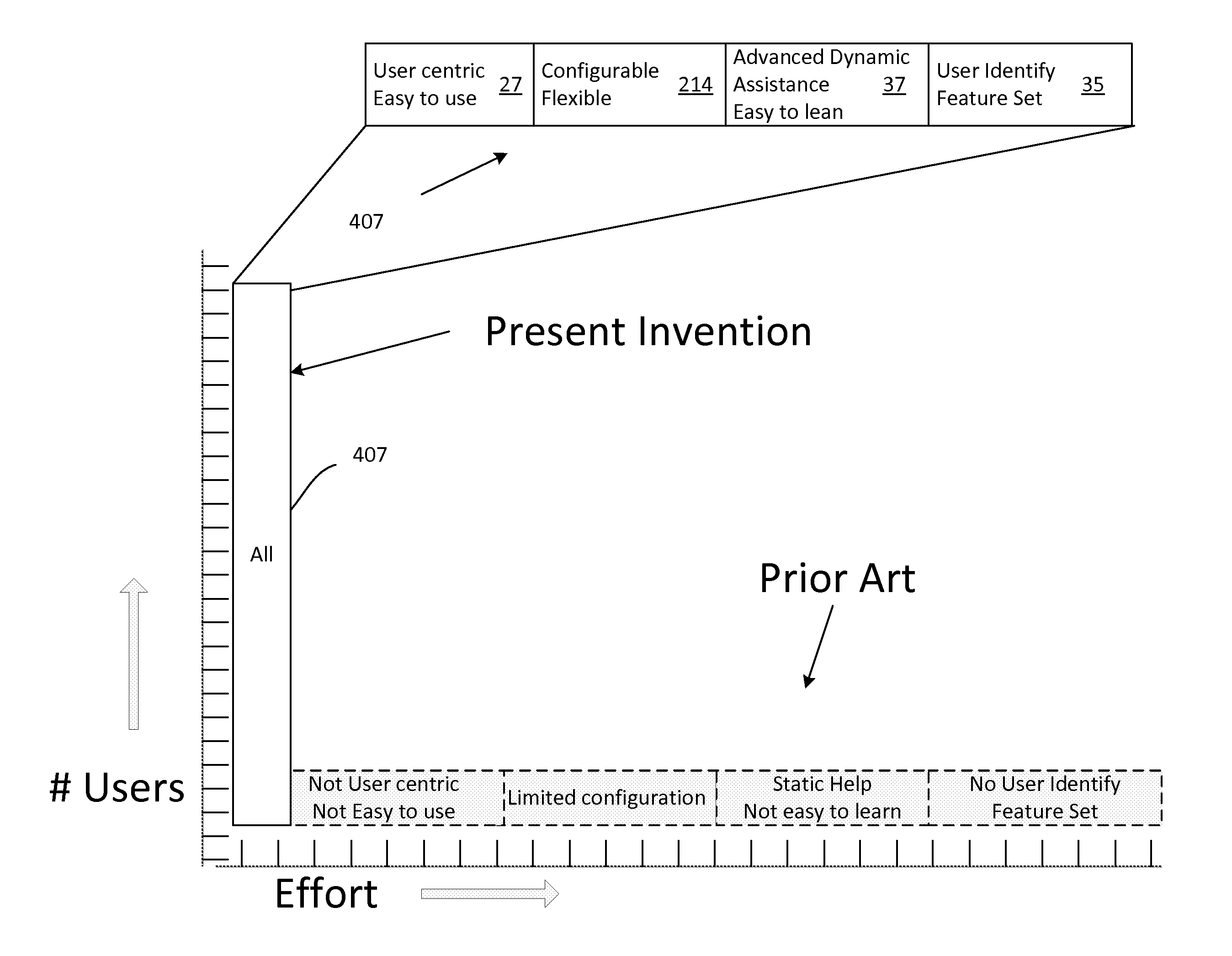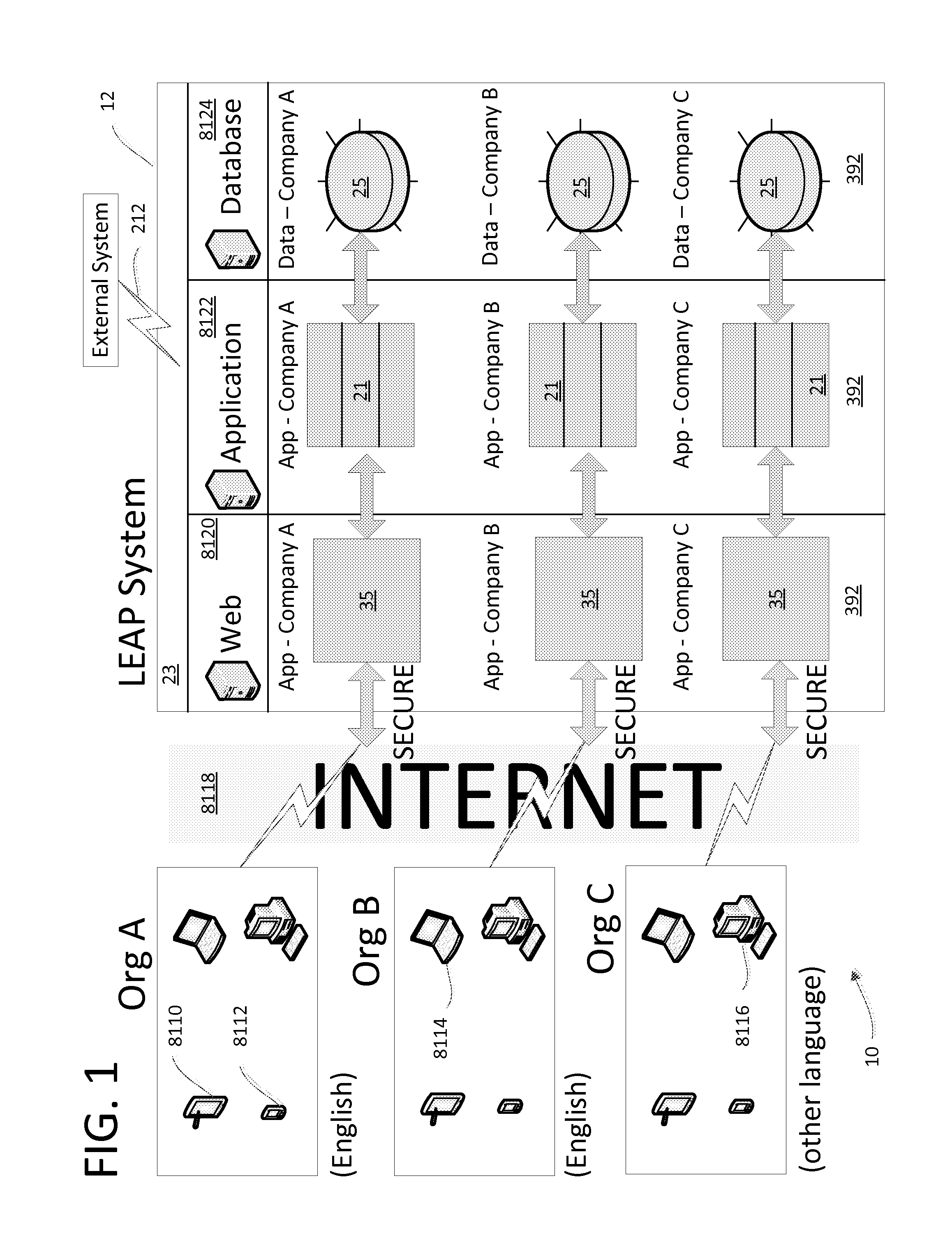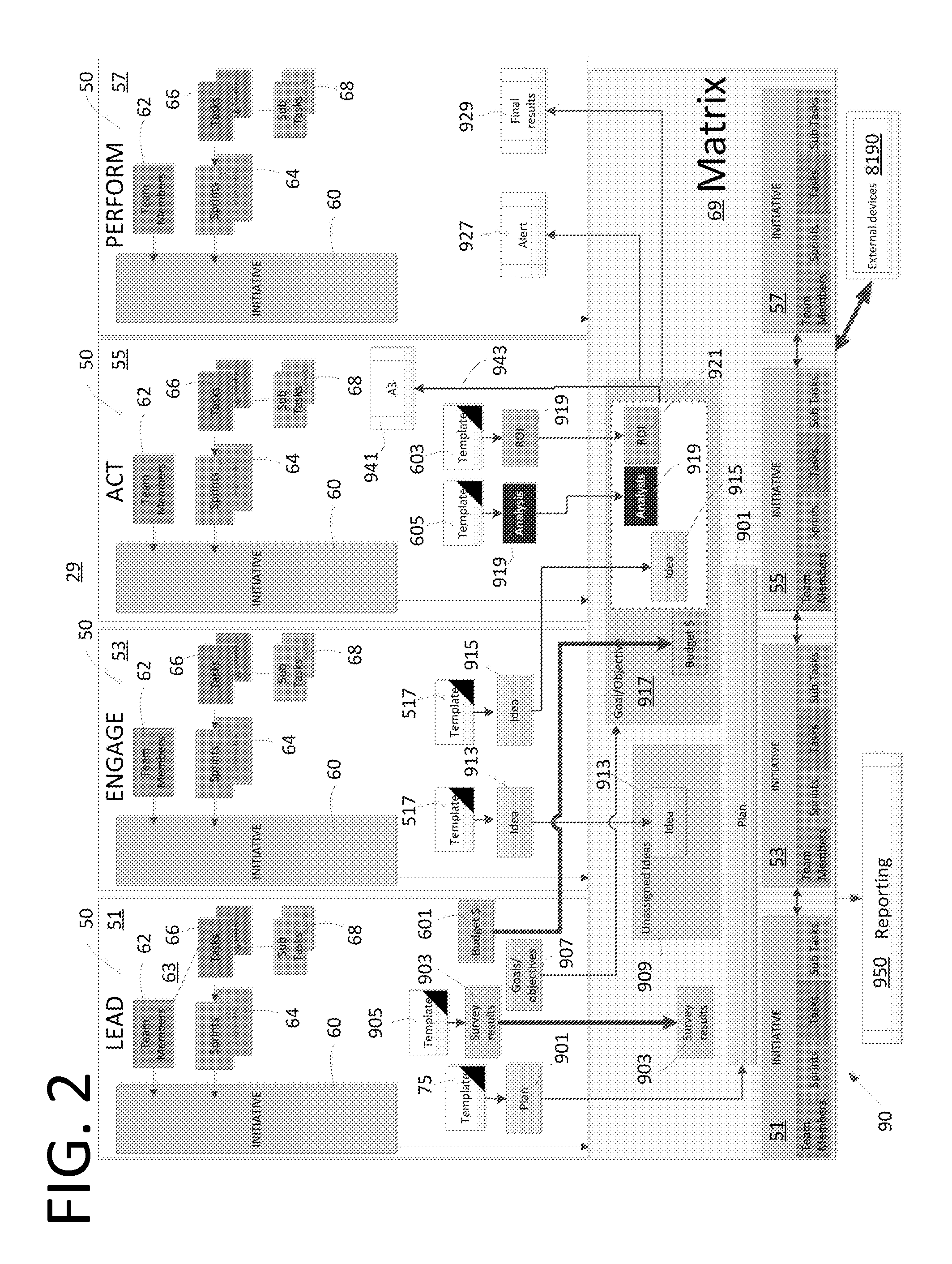However, these known approaches have several key deficiencies that negatively
impact the efficiency, effectiveness, and / or productivity of the organization, group, team, and or individual and, thus, prevent peak performance.
One limitation of known approaches is a common, top-down design approach that creates breakdowns in communications and translations of goals into actions.
Another way of describing this limitation is that the current art lacks an integrated and traceable process to drive, manage, and link the end-to-end process and ensure achieving effective strategic execution and implementation of desired plans and goals.
Miscommunication among the participants is common, resulting in poor performance to the stated goals.
Although many organizations develop strategic plans, most fail to define a coherent approach to manage and execute the plans.
Consequently, many
key management processes remain disconnected from strategy.
Second, current approaches typically address only one vertical activity with a vertical specific software application within the entire scope of the end-to-end process resulting in a flat, non-integrated, specialist-centric
software tool.
Further, known software applications are limited: They address the scope of one vertical activity, which is non-integrated and unlinked to other vertical activities.
This lack of an end-to-end linked systems approach in the known art (which can also be termed a vertical solutions approach) results in a specialist-centric environment where flat, non-integrated, and unlinked static tools are available to a few
highly skilled individuals who are then burdened with leading and implementing the activities.
This specialist-centric approach results in bottlenecks in the process resulting in disjointed, ineffective, and inefficient execution of the strategic plan as there is an overdependence upon a few skilled persons to lead, manage, and implement projects.
Third, current approaches are not designed to work as a systematic, fully integrated, and linked end-to-end process.
This results in a disparate, non-integrated unlinked processes and software application that is unable to provide the needed
traceability, transparency, and accountability.
This is one of the key reasons that strategic plans are not well executed.
But good strategies fail too, and when that happens, its often harder to pinpoint the reasons.
Yet despite the obvious importance of good planning and execution, relatively few management thinkers have focused on what kinds of processes and leadership are best for turning a strategy into results.
“Even though they are good managers, over time they really have to learn through the school of hard knocks, through experience, which means they make a lot of mistakes.” Ibid.
This lack of expertise in execution can have serious consequences.
Michael Mankins, a managing partner in Marakon's San Francisco office, says he believes much of that gap between expectation and performance is a failure to execute the company's strategy effectively.
Fourth, current approaches are not designed to transform data into finished products needed for efficient execution such as, for example, presentations to request project funding, “Return on Investment” calculations, problem solving analysis, strategic plans, or performance measurements.
This deficiency results in the need for additional
time consuming steps to assemble disparate data into cohesive presentations.
Fifth, current approaches do not adequately address a critical success factor in strategic execution to engage the organization, team, group, or individual to obtain the acceptance (or “buy in”) and solicit the engagement necessary for effective execution of the plan and efficient implementation.
Strategic plans that do not obtain sufficient engagement and acceptance by individuals and or the group have little chance to be well executed and achieve the goals of the plan.
Sixth, current approaches are too complex for effective or efficient strategic execution and are not designed from the user's perspective resulting in low user adoption rates.
If software is difficult to use, implementation requires expensive and time-consuming training programs to launch and is not sustainable over time.
Thus, implementing complex software will hamper effective strategic execution because of low user-adoption rates necessary to scale.
Seventh, current approaches are often associated to a pre-defined and specific methodology in place within the organization, this so called ‘hardwiring’ makes change and
adaptation difficult, and thus they are inflexible and have a shortened life.
Eighth, current approaches typically have static user-help software; this non-dynamic approach does not provide ways to adapt to each individual's needs.
This results in a lackluster feature that does not support
user needs for self-service help without intervention and hampers effective strategic execution across a large number of users.
It also increases support costs after implementation and lowers user adoption.
Ninth, current approaches have limited
scalability because: A) A top down design approach is not
usable by a wide audience, and B) They are to complex to
train a wide audience making it difficult to reach a high adoption rate.
This hampers effective and efficient strategic execution.
Tenth, current approaches have limited or no ability to capture collaborative communications with one or a plurality of individuals and link the communications to the activity.
This results in communications happening outside the software that cannot be traced and is difficult to reassemble if necessary.
 Login to View More
Login to View More  Login to View More
Login to View More 


